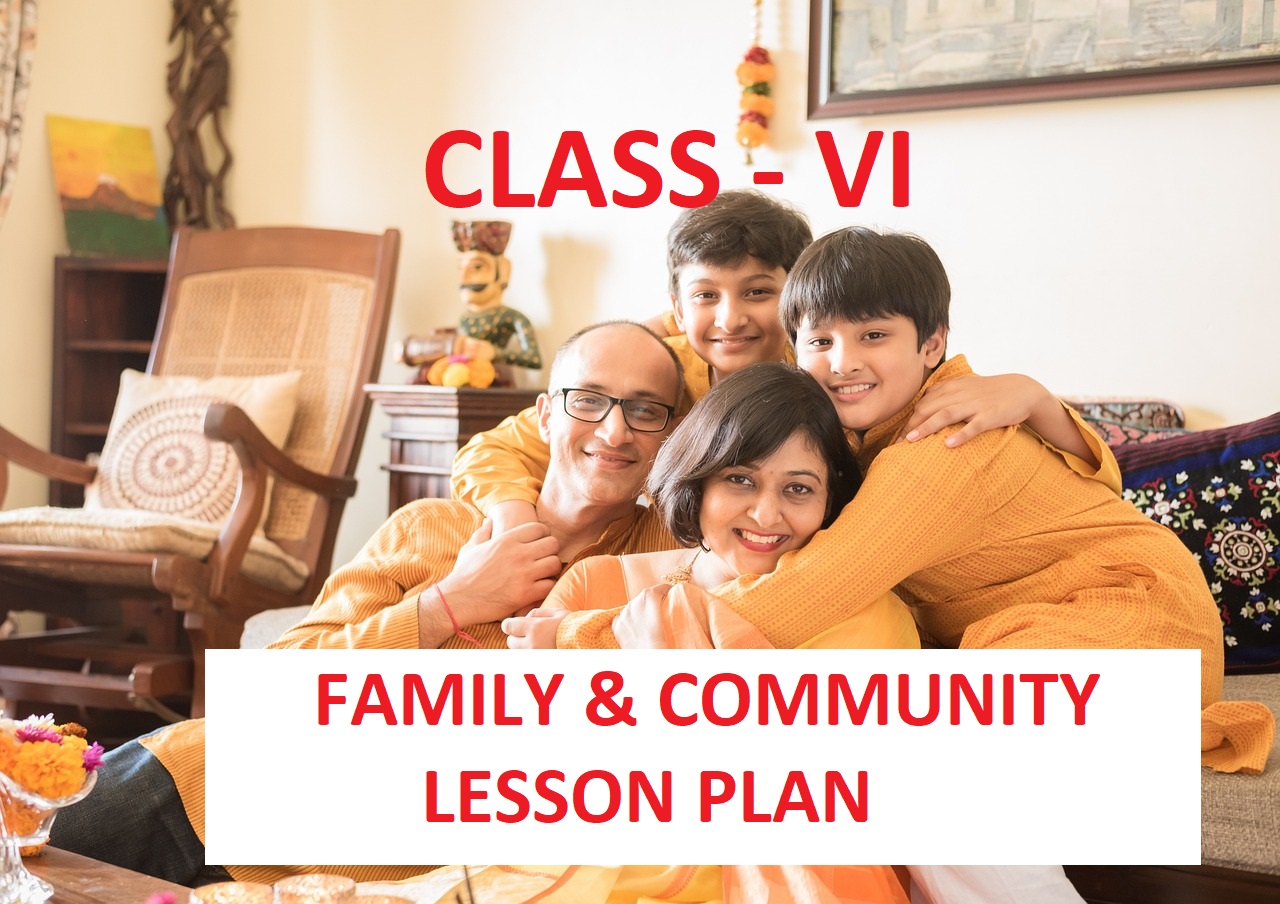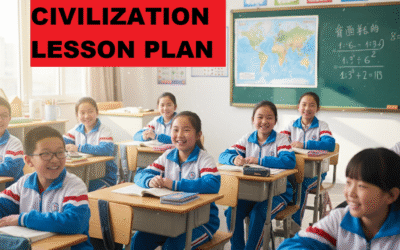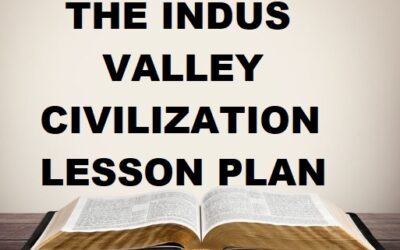Family and Community NCERT Class 6 Lesson Plan
Family and Community NCERT Class 6 Lesson Plan is a necessary instrument that teachers need to introduce students to the fundamental social units which influence their lives. This lesson plan ensures an organized method of making the students aware of the significance of family and community in their individual and social growth. With the use of the Family and Community NCERT Class 6 Lesson Plan, educators can connect with students through familiar examples, interactive exercises, and empathetic discussions. It also encourages empathy, cooperation, and mutual respect among students by drawing attention to varying family settings and community roles. The lesson plan is in accordance with NCERT guidelines, achieving the learning goals while fostering values important to a harmonious society. For Geography lesson plan with classroom activities, you can click on the given link Class VI Geography – Chapter 1: Locating Places on the Earth Lesson Plan
Finally, the Family and Community Lesson Plan equips educators with the ability to establish a solid foundation for social consciousness and responsible citizenship in young children.
Family and Community NCERT Class 6 Lesson Plan
Class: 6
Date: 24/05/2025
Subject: Social Science
Topic: Family and Community
Time: 3-4 Periods.
1. Learning Objectives:
Here are five learning objectives from Chapter “Family and Community” for Class 6:
- Know the meaning of family and community and their various types and roles in daily life.
- Understand the significance of relationships and duties within a family and a community.
- Value the variety of family compositions and community traditions around the world and in various regions.
- Cultivate empathy, cooperation, and mutual respect through class activities and discussions.
- Understand the function of community helpers and services in keeping people well and developing society.
These goals seek to establish social consciousness and interpersonal competencies among students.
2. General Objectives:
- To enable students to grasp the concept and significance of family and community.
- foster a sense of belonging and responsibility for one‘s family and community.
- To have respect for diversity in family types and community practices.
3. Teaching Materials:
Flashcards and Charts
Displaying types of families (nuclear, joint, extended) and community helpers (doctor, teacher, firefighter, etc.).
Family Tree Templates
Allows students to conceptualize their own family structure and relationships.
Role-Playing Materials
Props and scripts for playing out different family roles and community situations (e.g., neighborhood meeting, family gathering).
Picture Cards or Posters
Pictures showing different activities in the community, festivals, or family events to encourage discussion and observation.
Smartboard or Projector Presentations
Animated slides or videos defining the term family and community with real-life scenarios and anecdotes.
These aids render the lesson more interesting, understandable, and easier for learners.
4. Teaching Methodology
Interactive Discussion:
interactive discussion can be employed by the teacher to engage students actively and enhance meaning-making.
The teacher starts by posing open-ended questions such as,
“Who do you live with? ” or “What activities do you do with your neighbors? ” to stimulate students to share their experiences.
These answers can be employed to draw out important lessons such as types of families or what community is.
The teacher can record student responses on the board, putting together similar thoughts, and leading the class towards finding patterns.
This enables students to link their own lives to lesson material.
The instructor also invites discussion of diversity by inquiring if all families or communities are alike, which brings about discussion of inclusion and
respect.
To engage in such interaction, the students are heard, remain attentive, and acquire critical thinking while learning to value differences in family and
community make-up.
Demonstration Through Visuals:
The teacher employs demonstration through visuals to make abstract ideas from the chapter “Family and Community”
more tangible and meaningful for students in Class 6.
She starts by holding up bright-colored charts and flashcards that illustrate various family types—nuclear, joint, and extended.
Holding up each visual, she describes its characteristics and invites students to apply them to their own family forms.
Next, she displays pictures or a brief video clip of a community’s daily life
—e.g., workers working together, helpers in the community, or festivals being observed.
While students view it, she asks leading questions such as,
“What is occurring here? “ or “Who maintains a clean community? “ to maintain their interest.
The images not only get students‘ attention but also aid their recall.
By explicitly referring to and going through each image, the teacher ensures that students have a clear understanding of the main concepts through direct
observation and discussion.
Group Activity and Roleplay:
The teacher applies group work and role play to stimulate active engagement.
Further, students‘ comprehension of the “Family and Community” section.
She starts by grouping the class into small groups and giving each group a particular task—
like drawing a family tree, constructing a community helper collage, or preparing a mini skit on a family or community scenario.
For role play, the teacher gives students roles such as parents, children, shopkeepers, doctors, or teachers and requests that they role-
play common scenes—such as dinner time with their families, a trip to the doctor‘s office, or a town meeting.
She instructs them on presenting dialogues and encourages imagination.
While the groups rehearse and act out the scenes, the teacher monitors and provides guidance where necessary.
Following every presentation, she opens up a discussion on roles and responsibilities depicted.
This interactive approach assists learners in applying what they have learned, gaining confidence, and comprehending social roles in an enjoyable and
memorable manner.
Question-Answer Session:
The teacher will use the question-answer session to reinforce learning and assess students’ understanding of the “Family and Community” chapter.
He / She begins by asking simple, direct questions such as, “What is a nuclear family?” or “Can you name two community helpers?” to check basic recall.
Further, the teacher moves to open-ended questions like, “Why is it important to help our neighbors?” to encourage critical thinking.
As students respond, the teacher listens carefully, praises correct answers, and gently corrects misunderstandings by providing clear explanations.
The teacher also prompts quieter students to participate by asking individual questions, ensuring everyone stays involved.
Therefore, To keep the session lively, the teacher uses flashcards or images and ask students to identify or describe what they see.
In this way, the teacher actively engage the class through questions and answers.
He / She creates an interactive environment.
The students feel comfortable sharing ideas, clarifying doubts, and building confidence in expressing their thoughts about family and community life.
Family and Community NCERT Class 6 Lesson Plan
5. Introduction Of The Chapter Family and Community (5 minutes):
The teacher will introduce the chapter with a question:
“Who lives in your house? What do you call that group of people?”
Further the teacher will write student responses on the board.
After writing all the responses, the teacher will Introduce the terms “family” and “community.” and will show a chart with different family types.
6. Presentation (20 minutes):
Step 1: Types of Families (10 mins)
The teacher Use flashcards or a PPT to show nuclear, joint, and extended families.
Also ask students to identify their family type and share one unique tradition from their family.
Step 2: Community and Its Importance (10 mins)
Define community with examples (neighborhood, school, village).
Discuss roles of community helpers with pictures (e.g., doctor, teacher, sweeper).
Emphasize cooperation, unity, and shared responsibilities.
7. Activity -1: (Family and Community)
- The instructor starts the group activity by giving each student family tree worksheets.
- She informs the students about the activity‘s aim—to assist them in realizing family structures and the positions of various members.
- briefly demonstrates on the board how to complete the tree beginning with the student, followed by parents, grandparents, siblings, and other immediate relatives.
- further she asks students to finish their own family trees by filling in the names and jobs (e.g., mother – caretaker, father – office worker, grandmother – storyteller).
- While students are working, the teacher circulates around the room, providing assistance, answering questions,
- Once finished, she asks several students to share their family trees with the class.
- This task allows children to see their family relationship and realize how every member of the family adds to the well-being of the family, reinforcing the idea in a personal and interactive task.
Activity – 2: (Family and Community)
To carry out the role play exercise,
the teacher initially explains its intention—to enable the students to comprehend actual interactions in a family or community.
She illustrates briefly some simple situations like eating together as a family, celebrating a festival in the community, or going to see a doctor.
Firstly, The teacher divides the class into small groups.
Assigns a different scene to each group or lets them pick one.
The teacher directs the students in choosing roles (e.g., parent, child, shopkeeper, neighbor) and asks them to employ simple dialogues.
She allows them 5–10 minutes to rehearse, offering ideas or props if necessary.
When prepared, each group performs before the class.
Following each performance, the teacher questions the class regarding what they witnessed and discusses the roles performed.
This role-playing makes learning engaging and enjoyable, enabling students to learn about family and
community relationships better through actual scenarios.
8. Recap and Evaluation (5 minutes):
Pose brief oral questions:
1. What is a nuclear family?
2. Name any two community helpers.
3.Why is cooperation necessary in a family?
Assess student worksheets and discussion/activity participation.
9. Homework:
- Compose a short paragraph on how your family assists one another in everyday life.
- Sketch and color a picture depicting community life (e.g., people sweeping the park, celebrating a festival)
10. Interdisciplinary Linkages:
Art: Creating family trees, creating posters of community helpers.
Language: Creating paragraphs and labeling family roles.
Civics: Recognizing social responsibilities and diversity.
Science: Healthy practices in family/community (cleanness, safety).
11. Learning Outcomes: (Family and Community)
Students will be able to:
Explain their own family structure.
Respect and understand diverse kinds of families and communities.
Appreciate the importance of roles and responsibilities in these social groups.
Feel a sense of belonging, cooperation, and empathy.
12. Remedial Measures:
For slow learners: Give more visual aids and individual attention while doing the worksheet activity. Give them oral participation instead of writing.
Remedial measures for shy students: Invite participation through group activities instead of class performance.
For students with limited family background knowledge: Let them construct fictional or friend families to finish the worksheet.
Reinforcement: Apply flashcards and storytelling during subsequent sessions to reinforce major concepts.
Family and Community NCERT Class 6 Lesson Plan
13. Conclusion:
This Family and Community lesson plan will assist students in comprehending the chapter in a straightforward, organized, and interesting way. Through discussion, pictures, group exercise, and role playing, textbook learning is related to actual life experiences by the students. Filling out family trees, reading community roles, and role playing situations enhance their knowledge of relationships, duties, and social cooperation. Active learning, tolerance, and respect for diversity are encouraged in this lesson plan, making the subject matter more meaningful and relevant.
For instructors, the lesson plan serves as a guide, providing step-by-step teaching approaches, learning targets, and assessment methods. It assists time management, guarantees all important points are addressed, and offers mechanisms for dealing with various learning approaches and requirements. Through the inclusion of interdisciplinary connections, learning achievements, and remedial responses, the plan facilitates holistic instruction and inclusive education.
The plan assists the instructor in presenting an integrated lesson that addresses curriculum targets while maintaining students‘ active involvement.
Which activity did you like the most. Was this lesson plan helpful to you? Feel free to write in the comment box below.
Your message has been sent





0 Comments